1. Introduction
Esports means competitive video gaming played by professionals and watched by fans. In the 21st century, esports changed from small local events into a real industry with teams, sponsors, big events, and full-time players. What began as informal gatherings of friends playing video games has grown into a multi-billion-dollar industry with a global audience of hundreds of millions of people. Today, esports tournaments fill stadiums, attract online viewership comparable to traditional sports, and even offer scholarships and career opportunities for talented players. It has become a cultural phenomenon that blends technology, entertainment, and competition in an entirely new way. [1]
2. A Historical Overview of Esports
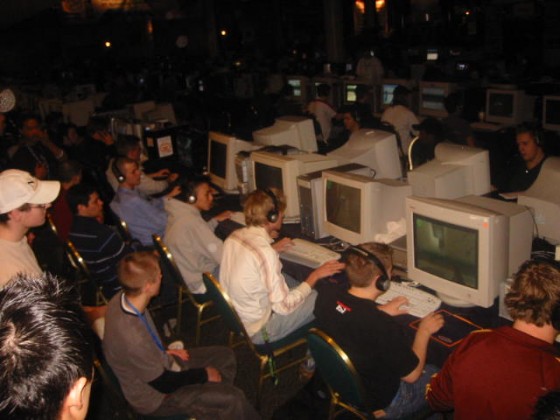
2.1 The Genesis (1970s – 1980s):
The idea of competing in video games is not new. The very first known video game competition took place in 1972 at Stanford University, where students competed in a game called Spacewar! The prize was a one-year subscription to Rolling Stone magazine, a very different reward from the millions of dollars seen today.
Later, in 1980, Atari held the first large-scale gaming event, the Space Invaders Championship, which attracted more than 10,000 players. This era was defined by high-score competitions, where players would try to get the highest score on arcade machines.
A key event was the founding of Twin Galaxies in 1981, an organization that officially tracked and verified these high scores, helping to formalize competitive gaming. [2]
2.2 The Internet Revolution (1990s – Early 2000s)
The 1990s marked a major turning point with the rise of the personal computer and the internet. Games like Doom and Quake introduced fast-paced, online multiplayer matches. This was a huge step, as it allowed players to compete from different locations using local area networks (LANs) and, later, the internet.
The creation of professional leagues like the Cyberathlete Professional League (CPL) in 1997 showed that competitive gaming was becoming more organized.

During this time, South Korea became a global leader in esports due to its advanced internet infrastructure and the popularity of games like StarCraft, which became a national pastime.
The first professional players were licensed in South Korea in 2000, which further solidified the idea of gaming as a serious career. [3]
2.3 The Streaming Boom (Late 2000s – 2010s)
The late 2000s and early 2010s brought a turning point with streaming platforms. The launch of Twitch in 2011 turned esports into a global spectator sport. Millions of fans could now watch their favourite players and tournaments live, interact through chat, and support teams. Games like League of Legends and Dota 2 started hosting tournaments with multi-million-dollar prize pools, which drew international attention and sponsorships. [4] [5]
2.4 The Modern Era (2020s – Present)
In the 2020s, esports became a multi-billion-dollar global industry. Professional leagues are run by publishers like Riot Games (League of Legends, Valorant), Valve (Dota 2, Counter-Strike), and Tencent/Garena (PUBG Mobile, Free Fire). Major tournaments such as The International (Dota 2) and League of Legends World Championship attract millions of viewers worldwide. [6]
Mobile esports have also exploded in Asia, Latin America, and Africa, making gaming accessible to a wider audience. Today, esports are treated like traditional sports — with sponsorships, training, media rights, and even talks about Olympic recognition. [1]
3. Revenue Overview
The global esports market was worth about USD 2.13 billion in 2024. One study expects it to grow to USD 7.46 billion by 2030, with an annual growth rate of around 23.1%. Sponsorship and advertising are among the biggest sources of revenue, making up over 40% of market income. [7]
3.1 Revenue Growth Journey
From 2017 to 2024, esports marketing grew quickly: in 2017, spending was around USD 339 million, but by 2024 it neared USD 982.8 million. Even through difficult times like the pandemic, esports marketing still rose. [1] [7]
3.2 Financial Performance
The financial performance of esports teams and leagues is becoming more stable, but it’s not without its challenges. While some of the biggest organizations, like Team Liquid, have won tens of millions of dollars in tournament prize money, this is an unreliable source of income because a team isn’t guaranteed to win. The most successful teams have learned to create a diverse set of revenue streams. [1]
Their income comes from a mix of sources including:
- Sponsorships and Partnerships: This is the largest source of revenue for most teams. Brands like BMW, Red Bull, and Nike pay millions to have their logos on team jerseys and to partner with popular players and streamers. [10]
- Merchandise Sales: Teams sell clothing, accessories, and other branded items directly to their fans. The more popular the team, the more merchandise they can sell. [8]
- Media Rights and Streaming Revenue: Leagues and teams make money by selling the rights to broadcast their competitions to streaming platforms like Twitch and YouTube. Individual players also earn money from subscriptions and ad revenue from their own personal streams. [8]
- Franchise League Revenue Sharing: In some top leagues (like the Valorant Champions Tour), teams pay a large fee to join, but in return, they get a guaranteed share of the league’s overall profits. This provides a more stable source of income than just winning tournaments. [9]
3.3 Profitability and Projections
Industry analysts expect esports market size to more than triple after 2024 figures — for example, reaching somewhere between USD 6–8 billion by about 2029-2032. Companies that manage costs, build strong sponsorships, and create own media content tend to be more profitable. Riot is changing its revenue sharing, and increasing digital content related to esports to raise returns. [9] [11]
4. The Unstoppable Growth
Esports is growing faster than ever and shows no signs of slowing down. More people are watching and playing games, and big companies are investing heavily in tournaments, teams, and technology. With new innovations like virtual reality, live streaming, and better online platforms, esports is reaching more fans worldwide. This growth is creating exciting opportunities for players, content creators, and businesses, making esports a powerful and unstoppable part of the future of entertainment.
4.1Economic Impact
-
Esports aren’t just about games anymore — it’s making real money and creating real jobs. For example, a report estimates that Saudi Arabia could add US$13.3 billion to its GDP from esports and gaming by 2030. That includes around 39,000 new jobs. [12]
-
The global esports audience is growing fast. There were about 215 million dedicated esports fans in 2020, but by 2025, there are expected to be over 318 million dedicated fans, plus many more occasional viewers. [12]
-
Revenue is also rising. In 2025, the global esports market is projected to generate nearly US$1.8-2.0 billion, up from much less just a few years earlier. This money comes from sponsorships, advertising, media rights, ticket sales, and merchandise. [13]
4.2 Mainstream Acceptance
-
Esports are becoming something normal people talk about — it’s more accepted in culture. Big events are now held in big arenas. For example, the Esports World Cup in Riyadh will have a $70 million prize pool, include 24 different games (including Valorant, a popular game), and is backed by national strategy plans. [14]
-
More people are watching esports than ever before, not just hardcore gamers. By 2025, over 600-700 million people are expected to be part of the esports audience (both regular and casual viewers). That’s similar to viewership of many traditional sports, especially in younger age groups. [15]
-
Governments and mainstream institutions are also recognizing esports. Esports were included as a medal event in the Asian Games (2022/2023), which shows larger sporting bodies are taking esports seriously. [16]
Most popular esports games today
| Rank | Game Title | Peak Viewers (2024) | Genre | Developer / Publisher |
|---|---|---|---|---|
| 1 | League of Legends | 6,856,769 | MOBA | Riot Games |
| 2 | Mobile Legends: Bang Bang | 4,132,224 | MOBA | Moonton |
| 3 | Counter-Strike 2 | 1,789,313 | FPS | Valve Corporation |
| 4 | Dota 2 | 1,784,158 | MOBA | Valve Corporation |
| 5 | PUBG Mobile | 1,389,269 | Battle Royale | Krafton Inc. |
| 6 | Honor of Kings | N/A | MOBA | Tencent Games |
| 7 | Free Fire | N/A | Battle Royale | Garena |
| 8 | Valorant | 1,687,848 | FPS | Riot Games |
| 9 | Apex Legends | N/A | Battle Royale/FPS | Respawn Entertainment |
| 10 | Rocket League | N/A | Sports/Arcade | Psyonix |
5. Top Esports Companies/Organizations
Riot Games
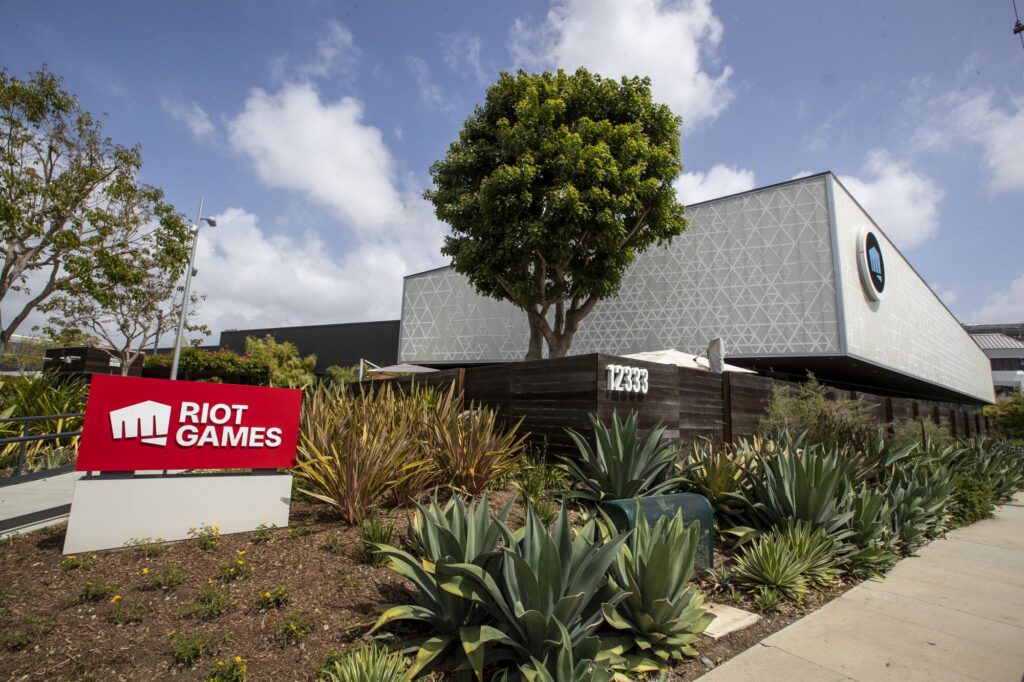
Riot Games is a leading video game developer and esports organizer known for creating highly popular games that have shaped the esports industry. The company not only develops games but also organizes global competitive leagues, tournaments, and events that attract millions of viewers. [18]
- Founded: 2006
- Founder / Key Persons: Brandon Beck & Marc Merrill (co-founders) — now part of Tencent ownership.
- Headquarters: Los Angeles, California, USA
- Parent Company: Tencent Holdings (owns Riot Games)
- Market Value / Influence: Riot Games is a major player in esports & gaming; in 2022 their revenue exceeded US$3 billion, largely driven by titles like League of Legends and Valorant. [17]
- Website: riotgames.com 23

Top Games [18]
- League of Legends (LoL)
- Valorant
- Teamfight Tactics
- Legends of Runeterra
- Wild Rift
Cloud9

Cloud9 is one of the most recognized and successful esports organizations in the world. Since its founding in 2013, it has grown into a global powerhouse with championship titles across multiple games. Cloud9 is famous for being the first North American team to win a CS:GO Major (ELEAGUE Major: Boston 2018) and also for its early dominance in League of Legends.
- Founded: 2013
- Founders: Jack Etienne & Paullie Etienne
- Headquarters: Santa Monica, California, USA
- Parent Company: Independent
- Market Value: Estimated at $380 million as of 2022 [19]
- Website: cloud9.gg

Popular Games [20]
- League of Legends
- Valorant
- Counter-Strike 2
- Rocket League
- Halo Infinite
- Rainbow Six Siege
- Super Smash Bros. Melee
- World of Warcraft, Call of Duty, Apex Legends, EA Sports FC, Teamfight Tactics
EA Sports

EA Sports is a division of Electronic Arts, specializing in the development and publication of sports video games. Established in 1991, EA Sports has become a significant player in the gaming industry, known for its annual releases and realistic simulations of various sports.
- Founded: 1991
- Founder: Electronic Arts (EA)
- Headquarters: Redwood City, California, USA
- Parent Company: Electronic Arts (EA)
- Market Value: Approximately $43.31 billion (as of September 2025) [21]
- Website: ea sports

Popular Games [22]
- Madden NFL series
- EA Sports FC (formerly FIFA)
- UFC series
- NHL series
- NBA Live series
- PGA Tour series
- EA Sports WRC (World Rally Championship)
Garena

Garena is a leading online games developer and publisher based in Singapore. Established in 2009, it operates as the digital entertainment arm of Sea Limited, a global consumer internet company. Garena is renowned for its popular mobile and PC games, particularly the battle royale game Free Fire, which has garnered a massive global following. [24]
- Founded: 2009
- Headquarters: Fusionopolis Place, Galaxis, Singapore
- Founder: Forrest Li
- Parent Company: Sea Limited (NYSE: SE)
- Market Value: Sea Limited, the parent company, has a market capitalization of approximately $114.11 billion as of September 2025 [23]
- Website: garena

Popular Games [24]
- Free Fire
- League of Legends (SEA region)
- Arena of Valor
- Speed Drifters
- Call of Duty: Mobile
Krafton Inc.

Krafton is a South Korean video game company, best known for developing PUBG (PlayerUnknown’s Battlegrounds), one of the most popular battle royale games in the world. Founded in 2018 as a holding company, Krafton manages multiple game development studios and focuses on PC, console, and mobile gaming. The company has a strong global presence and continues to expand its portfolio in interactive entertainment and esports. [25]
- Founded: November 5, 2018
- Founder: Chang Byung-gyu (also the largest shareholder)
- Headquarters: Bundang District, Seongnam, South Korea
- Parent Company: Krafton is an independent company, but its main owners are Chang Byung-gyu (about 15%) and Tencent/Image Frame Investment (about 14%).
- Market Value: Approximately $9.49 billion USD as of September 2025 [23]
- Website: Krafton

Popular Games [25]
- PUBG Battlegrounds
- PUBG Mobile
- New State Mobile
- The Callisto Protocol
- Subnautica
Supercell

Supercell is a Finnish mobile game development company, which is globally recognized for its high-quality, “freemium” style games that have become cultural phenomena. The company follows a unique “cell” organizational model, where small teams independently create and develop games. [26]
- Founded: 2010
- Founders: Ilkka Paananen, Mikko Kodisoja, Petri Styrman, Visa Forsten, Lassi Leppinen, and Mikko Hämäläinen
- Headquarters: Helsinki, Finland
- Parent Company: Majority owned by Tencent (about 84% stake since 2016)
- Market Value / Influence: In 2023, Supercell earned about €1.7 billion in revenue and made a profit of around €580 million. It is known as one of the biggest and most successful mobile gaming companies in the world.
- Website: supercell.com

Popular Games [26]
- Hay Day
- Clash of Clans
- Boom Beach
- Clash Royale
- Brawl Stars
- Squad Busters
Moonton

Moonton is a Chinese video game developer and publisher, best known for creating the popular mobile multiplayer online battle arena (MOBA) game Mobile Legends: Bang Bang. Founded in 2014, the company focuses on mobile gaming and has gained global recognition, especially in Southeast Asia. Moonton was later acquired by ByteDance, the parent company of TikTok, in 2021, expanding its influence in the gaming industry. [27]
- Founded: 2014
- Founder: Justin Yuan (CEO), Xu Zhenhua (co-founder)
- Headquarters: Minhang District, Shanghai, China
- Parent Company: ByteDance (via Nuverse)
- Market Value / Influence: Acquired by ByteDance in 2021 for around US$4 billion [3]
- Website: en.moonton.com
- Mobile Legends: Bang Bang
- Mobile Legends: Adventure
- Magic Rush: Heroes
- Magic Chess: Go Go
6. Professionalization & Infrastructure in Esports
Esports have grown from a casual hobby into a serious global industry. This shift, known as professionalization, involves creating a stable and respected career path for players and others in the field. This can’t happen without a strong infrastructure—the systems and physical and digital foundations that support the industry.
6.1 Professionalization

Professionalization is all about making esports a real job with a clear career path, just like traditional sports.
- Career Paths: It’s no longer just about being a pro gamer. There are now many different jobs, including coaches, analysts, team managers, and even sports psychologists who help players with their mental health and focus. [29]
- Structured Teams: Teams are now more like traditional sports franchises. They have owners, salaried players, and support staff. This gives players a steady income and benefits, rather than relying solely on prize money. [31]
- Training and Development: Pro players now follow a strict training schedule that includes not just playing the game, but also physical fitness, proper nutrition, and mental conditioning to handle the stress of competition. This systematic approach helps them improve and perform consistently. [30]
6.2 Infrastructure
Infrastructure is the “behind-the-scenes” technology and physical spaces that make professional esports possible.
Online and Network Infrastructure:
- High-Speed Internet: Esports rely on a strong, low-latency internet connection. Companies are building dedicated networks to ensure smooth, lag-free gameplay for both players and viewers. [32]
- Streaming Platforms: Platforms like Twitch and YouTube Gaming are essential. They allow millions of fans to watch games and provide a way for players and teams to connect with their audience and earn money through ads and subscriptions. [33]
- Dedicated Arenas: Large, purpose-built esports arenas, like the Esports Stadium Arlington in the USA, host live events and provide a great experience for fans. [34]
- Training Facilities: Many professional teams have “boot camps” or training houses. These are state-of-the-art facilities where players live, practice, and train together. These spaces help with team communication, strategy development, and overall professionalism. [34]
- Broadcast and Production Studios: To create a high-quality broadcast, esports needs professional production studios, camera crews, and commentators. These studios are crucial for making esports look as good as traditional sports broadcasts. [35]
7. Cultural Shifts in 21st Century Gaming
In the 21st century, gaming has moved beyond a simple hobby to become a dominant cultural force. The rise of esports has led to major shifts in how we view careers, education, inclusivity, and entertainment. [35]
-
Esports Meets African Culture:
African Giants Esports is helping bring African creativity into global gaming by adding local music, art, and storytelling to esports. This makes the gaming world more diverse and exciting. [36] -
From Screens to Stardom:
Esports is now part of movies, TV, and celebrity culture. Gamers are becoming stars, and African players are gaining global attention through platforms like African Giants Esports. [36] -
Gaming Inspires Fashion and Art:
Esports is influencing African fashion and art, leading to cool collaborations between gamers, designers, and artists. African Giants Esports promotes this fusion, showcasing Africa’s unique style in gaming. [36]
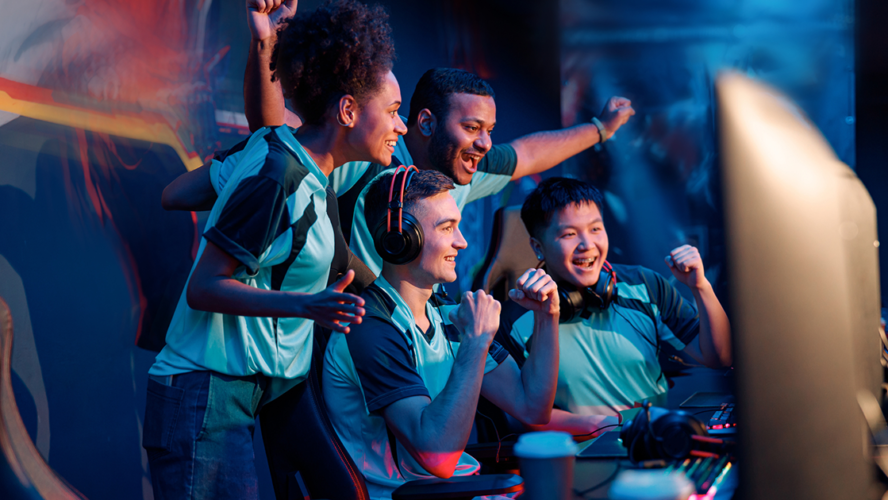
7.1 Esports as a Career
Esports is now a viable, professional career path. It’s not just about players anymore; the industry has created a wide array of jobs. For a long time, professional gaming was seen as a niche and unsustainable pursuit, but this perception has been completely transformed. [39]

- Players: The most visible career path is becoming a professional player, who can earn a living through salaries, prize money from tournaments, and sponsorships. Top players can make millions. [38]
- Support Roles: Teams now employ coaches, analysts, managers, and even psychologists to help players perform at their best. [38]
- Wider Industry Jobs: The growth of esports has created new career opportunities in areas like broadcasting, event production, marketing, and content creation (like streaming on platforms like Twitch and YouTube). [40]
7.2 Education & Esports
Education is increasingly embracing esports, recognizing its potential to engage students and teach valuable skills.
- Scholarships: Over 200 U.S. colleges and universities are members of the National Association of Collegiate Esports (NACE), offering millions of dollars in scholarships to talented players. This helps make higher education more accessible for a new generation of students. [41] [37]
- Curriculum: Schools are beginning to incorporate esports into their curriculum. Studies have shown that participation in esports can help students develop skills like teamwork, communication, and strategic thinking. Some schools even have dedicated esports programs that integrate with STEM (Science, Technology, Engineering, and Mathematics) subjects. [42] [43]
- Student Engagement: Esports provides a way to engage students who may not be interested in traditional sports or extracurriculars. It fosters a sense of community and belonging, which can lead to improved attendance and academic performance. [44]
7.3 Inclusivity
While esports have the potential to be a highly inclusive activity, it still faces challenges related to diversity and representation. Unlike traditional sports that are often divided by gender or physical ability, esports theoretically offer a level playing field where skill is the only thing that matters. [45]
- Gender: The professional scene is still heavily dominated by men, despite a large and growing number of female gamers. Women often face harassment and a toxic environment online, which can discourage them from pursuing a career in competitive gaming. [46]
- Initiatives: A number of organizations are working to promote inclusivity, with initiatives focused on supporting women and minorities in the gaming community. For example, some tournaments are specifically for female players to provide them with a supportive competitive environment and showcase their skills. [47]
8. Technology & Innovation
Gaming technology is rapidly advancing, with new innovations fundamentally changing the landscape of esports. The integration of technologies like 5G, cloud gaming, VR/AR, and AI is creating new ways for players to compete, train, and for fans to engage with the sport. [48]
8.1 5G & Cloud Gaming
The combination of 5G and cloud gaming is making high-end gaming accessible to a wider audience than ever before.
- 5G‘s ultra-low latency and high speeds are crucial for competitive gaming. It reduces the time it takes for a player’s action to register on a server to milliseconds, which is vital for fast-paced games. This eliminates the need for a wired connection for a top-tier experience. [48]
- Cloud gaming streams games from powerful remote servers to a user’s device. By removing the need for expensive hardware, it lets players access high-quality titles on a simple smartphone or tablet. The reliability of 5G makes this possible without frustrating lag or dropped connections. [49]
8.2 VR / AR Esports
While still emerging, virtual and augmented reality are creating new esports experiences for both players and fans.
- Virtual Reality (VR) is used for games that are physically immersive, like Beat Saber or Echo Arena. VR esports requires players to use their bodies in new ways, creating a physically demanding form of competition that is captivating for spectators. [48]
- Augmented Reality (AR) is primarily used to enhance the viewing experience. During a live broadcast, AR technology can superimpose graphics, such as character stats or a 3D replay of a play, onto the physical stage. This makes broadcasts more dynamic and gives fans a richer understanding of the game. [48]
8.3 AI & Data Analytics
AI and data analytics are revolutionizing how teams train and strategize, providing a competitive edge.
- Performance Analysis: AI-powered platforms analyse massive amounts of gameplay data to identify patterns and weaknesses in a player’s performance. They can track every single action, from mouse clicks to in-game decisions, to provide personalized training routines and feedback. [50]
- Strategic Planning: AI can analyse a team’s opponents by watching thousands of past matches. It can identify recurring strategies, tendencies, and vulnerabilities that a human might miss. This allows teams to create a data-driven strategy to exploit their opponents’ weaknesses. [50]
8.4 Mainstream Media & Entertainment
The line between gaming and traditional entertainment is getting blurrier. Esports is now a major part of mainstream media, attracting big names, filling up stadiums, and being featured in movies and TV shows.
How Mainstream Media Covers Esports
Major media companies are now treating esports with the same seriousness as traditional sports. They have realized that a huge audience, especially young people, is watching esports instead of traditional TV.
- TV Channels: Sports networks like ESPN have dedicated shows and segments to esports news, highlights, and live tournament coverage. This helps bring esports to a new, broader audience that may not be familiar with gaming. [51]
- News Coverage: News websites and magazines like The New York Times and Forbes regularly publish articles about the business of esports, player salaries, and major tournaments. This gives the industry more respect and attention. [51]
- Production Quality: Esports broadcasts now use high-quality production, with multiple camera angles, professional commentators (casters), and advanced graphics, making them look just like a broadcast of a football or basketball game. [51]
8.5 Celebrities & Big Investors
The financial success and huge audience of esports have caught the attention of celebrities and athletes, who are now investing in or even owning esports teams.
- Famous Owners: People like Michael Jordan, Drake, and David Beckham have invested millions of dollars in esports organizations. This not only provides a financial boost but also brings a lot of public attention and credibility to the industry. [52]

- Endorsements: Top players and streamers are now seen as celebrities in their own right. They are sponsored by major brands like Nike and Adidas, and they collaborate with musicians and actors, bringing esports into the world of pop culture. [52]
9. Olympic Recognition & Global Legitimacy
Olympic recognition is a major goal for esports, as it would solidify its status as a legitimate global form of competition. While the journey has been long, esports has recently made significant progress toward this goal.
The Debate Over Esports as a Sport
The biggest challenge for esports has been the debate over whether it should be classified as a “sport.”
- Arguments Against: Critics argue that “sport” requires significant physical exertion, whereas esports are sedentary. They often call esports a “mind sport” like chess, emphasizing the mental skills over physical ones. [53]
- Arguments For: Supporters point to the intense hand-eye coordination, strategic planning, and quick reflexes required. They also highlight the rigorous training regimens that professional players follow, which include physical fitness and mental coaching. [53]
This debate often comes down to how one defines the word “sport,” but the International Olympic Committee (IOC) is starting to lean toward a more inclusive definition.
9.1 Progress Toward Olympic Recognition
Despite the debate, esports have been steadily gaining ground and getting closer to Olympic status.
- Early Steps: The IOC started by including esports as a demonstration event at the 2018 Asian Games and later as a full medal event at the 2022 Asian Games. This was a crucial step in proving its legitimacy alongside traditional sports. [55]
- Official Olympic Esports Games: In a landmark decision, the IOC voted in July 2024 to create the Olympic Esports Games. [54]

- The first event is planned to be held in Riyadh, Saudi Arabia, in 2027. This partnership with the Saudi Arabian Olympic Committee and the Esports World Cup Foundation is a huge milestone for the industry. [56]
9.2 Global Legitimacy Beyond the Olympics
Esports’ legitimacy is growing through official recognition from governments and sporting bodies worldwide.
- Visa Recognition: Countries like the United States have officially started granting visas to professional gamers under the P-1A visa category, which is designated for “Internationally Recognized Athletes.” This means the U.S. government legally sees pro gamers as athletes. [58]
- National Recognition: Many nations, including China, South Korea, and Russia, have officially classified esports as a sport. This government backing often comes with benefits like official licenses for players and a strong foundation for the industry’s growth and professionalization. [59]
10. Challenges of Esports
Esports has grown incredibly fast, but it faces major challenges that could affect its future. These issues include how to make the industry stable, protect player health, prevent cheating, and manage the negative effects of its huge commercial success.
10.1 Sustainability
For esports to be a long-lasting industry, it needs a stable foundation. Many esports teams and organizations are still not profitable, relying on a few large sponsorships and investments. This creates financial uncertainty and makes it hard to plan for the future. Additionally, the industry lacks a single, strong governing body, which makes it difficult to have consistent rules and standards for all teams and leagues. [36] [60] [61]
10.2 Player Health
The life of a professional esports’ player is very demanding, and it can seriously affect their health.
- Physical Issues: Players spend many hours practicing, which can lead to repetitive strain injuries in their wrists and hands, as well as neck and back pain from poor posture. [49]
- Mental Stress: The constant pressure to perform, combined with a demanding schedule of training, travel, and public appearances can lead to burnout, anxiety, and depression. A player’s career is often short, and many don’t have a good plan for what to do after they retire. [49]
- Performance-Enhancing Substances: Some players use stimulants to help with focus and reflexes, which can have serious negative health effects.[36]
10.3 Cheating & Match-Fixing
Match-fixing, where players or teams intentionally lose for compensation, has been a major issue in Esports, similar to traditional sports. In StarCraft II, several top Korean players were banned for life in 2015–2016 due to match-fixing, with some facing legal consequences. [62]
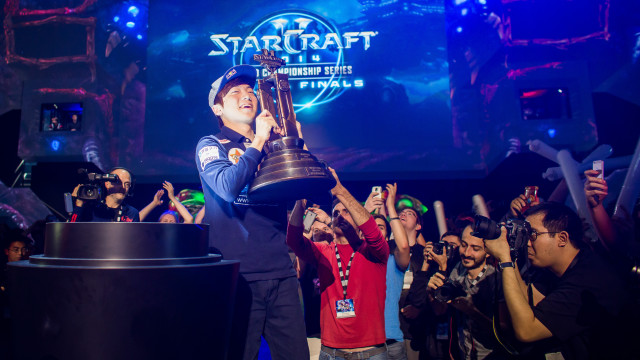
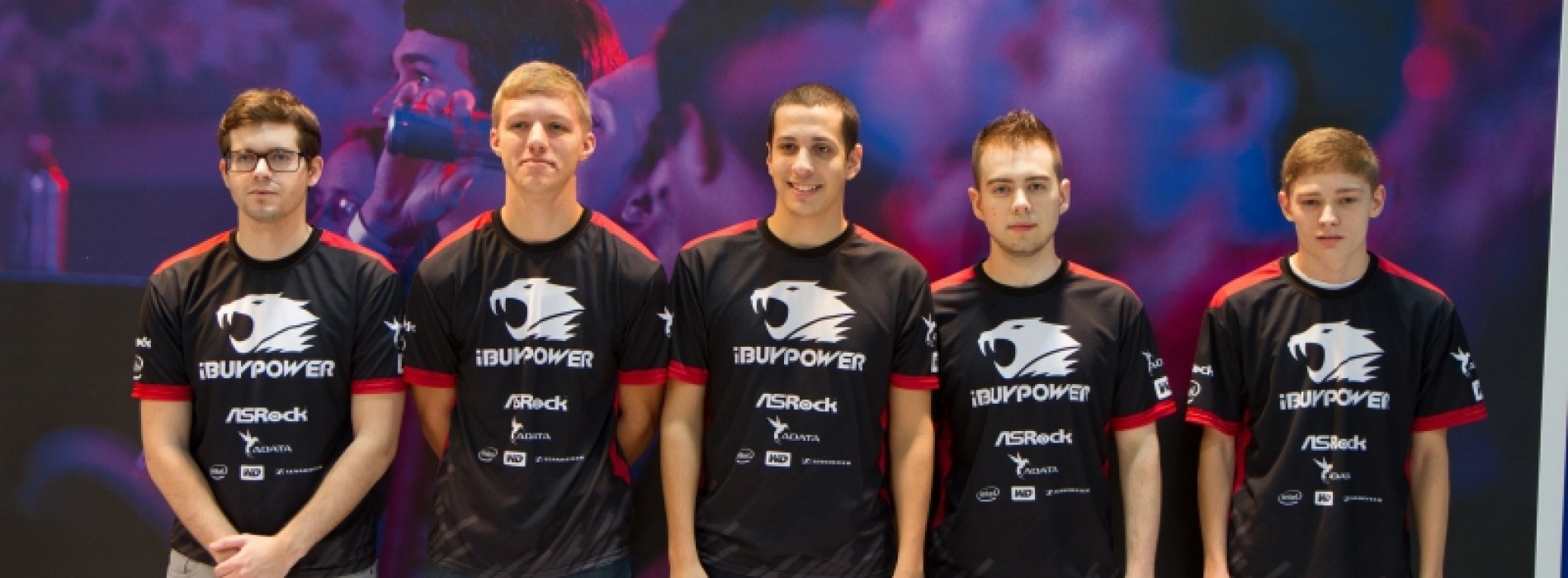
In CS:GO, the iBuyPower team lost a 2015 match suspiciously to profit from bets on in-game skins, resulting in lifetime bans for the players. These scandals hurt the integrity of Esports and caused sponsors to withdraw, highlighting the need for stricter rules to prevent future match-fixing. [63]
- Software Cheats: Players can use illegal programs like “aimbots” (which automatically aim for them) or “wallhacks” (which let them see through walls). While game developers have anti-cheat software, cheaters are always trying to find new ways to bypass it. [60]
- Match-Fixing: This is when players or teams intentionally lose a game in exchange for money, often from illegal betting. This serious crime is a growing problem as more money flows into esports betting. [3]
10.4 Over-commercialization
As esports has become a huge business, it has also become very focused on making money, which can sometimes hurt the experience for fans and players.
- Focus on Profit: With big brands and investors involved, the focus can shift from the love of the game to how much money can be made. This can lead to a flood of advertising and sponsorships that some fans dislike. [36]
- Player Burnout: Players are not just athletes; they are also expected to be entertainers. The pressure to constantly stream and create content, on top of their demanding practice schedules, can lead to player burnout and a feeling of being exploited. [36]
11. Future Outlook
Esports is set to continue its rapid growth, becoming a mainstream form of entertainment worldwide. With increasing investment from sponsors, media companies, and educational institutions, professional gaming will expand both in scale and accessibility. Advances in technology, such as virtual reality, cloud gaming, and AI-driven analytics, will enhance the gaming experience for players and viewers alike. The global audience is expected to grow further, making esports a lucrative industry with diverse career opportunities and stronger community engagement.
11.1 Market Growth & Revenue Expansion
- The global esports market was about USD 2.13 billion in 2024 and is expected to reach USD 7.46 billion by 2030, growing at around 23.1% CAGR. [7]
- The mobile gaming market was worth USD 139.38 billion in 2024 and could grow to USD 256.19 billion by 2030. Growth comes from smartphone access, stronger devices, and free-to-play games with in-app purchases.[64]
11.2 Mobile Esports
-
The mobile esports market was USD 655.1 million in 2024 and is expected to reach USD 8.62 billion by 2034, with a 29.4% CAGR. [65]
-
Revenue streams include sponsorships, ads, in-game purchases, and streaming rights. The rapid spread of smartphones and affordable internet is helping mobile esports reach new audiences, especially in Asia, Latin America, and Africa. [65]
11.3 Long-Term Vision
-
Immersive Technologies (AR/VR/XR): The immersive tech market is expected to grow from USD 44.62 billion in 2025 to USD 152.73 billion by 2030, powered by AR/VR esports experiences. [8]
-
5G & Cloud Gaming: The 5G VR market may grow from USD 6.96 billion in 2024 to USD 79.73 billion by 2029, improving streaming quality and reducing lag. [8][66]
-
VR Esports: Competitive VR leagues are expanding, with the VR Esports League market projected to grow from USD 1.28 billion in 2024 to USD 5.62 billion by 2033. [66]
-
Mainstream Future: Esports may soon mirror traditional sports — stable leagues, professional teams, sponsorships, and stadium events. Mobile esports will especially grow in regions where smartphones are the primary gaming devices. [67]
12 Conclusion
Esports have grown from a niche hobby into a mainstream entertainment industry with a global presence. This rapid rise has created new career paths, influenced pop culture, and attracted major investments. However, with this growth come significant challenges that the industry must address to ensure its long-term success. [65]
12.1 Market is Growing Fast
The esports market is rising quickly. It was USD 2.13 billion in 2024 and may reach USD 7.46 billion by 2030. Mobile gaming will also grow from USD 139.38 billion in 2024 to USD 256.19 billion by 2030.[7] [64]
12. 2 Mobile Esports Will Lead
Mobile esports is one of the fastest-growing parts. It was USD 655.1 million in 2024 and could reach USD 8.62 billion by 2034. This growth is strong in Asia, Latin America, and Africa where smartphones are more common than gaming PCs. [64]
12.3 New Technology Will Shape the Future
Esports will get a big boost from 5G, AR, VR, and cloud gaming. For example, the immersive technology market could rise from USD 44.62 billion in 2025 to USD 152.73 billion in 2030. The 5G VR market may also grow to USD 79.73 billion by 2029. These technologies will make esports more exciting and realistic. [8] [67]
12.4 Esports Becoming Mainstream
In the future, esports will be like traditional sports with leagues, teams, stadium events, and big sponsors. Even VR esports leagues are growing fast — from USD 1.28 billion in 2024 to USD 5.62 billion in 2033. [66]
Resources:
- Esports Insider
- Telefonica
- Wikipedia
- Nerd Street
- Abios Gaming
- ScienceDirect
- Grand View Research
- Mordor Intelligence
- Stellar MR
- Influencer Marketing Hub
- Riot Games
- PwC
- Statista
- Reuters19
- Scottmax
- arXiv
- Osum
- riotgames
- CrustLab24
- cloud9.gg 25
- StockAnalysis
- ea sports
- Companies Market Cap
- garena
- Krafton
- supercell
- AsiaTechWire
- moonton
- Harian Kepri
- Arab News
- EGamersWorld
- IABM
- Faster Capital
- Senet
- Dimensional Innovation
- Medium
- Esports Tower
- Central Michigan University
- Gaming Concepts
- Game Influencers
- Simply CRM
- RISE
- Gess Education
- Family Online Safety Institute
- Human Kinetics Journals
- ISPO
- noble.gg
- Longdom
- ResearchGate
- Webmob Technologies
- Strive
- Sigma
- Olympics
- Drishti IAS
- Harvard Law School Journals
- Esports World Cup
- European Esports Federation
- Altius Immigration Law
- The Law Tree
- International Journal of Esports
- Business & Industry
- Topen Sports
- Cyber Power PC
- Globe Newswire
- Market.us
- The Business Research Company
- Detaintelo

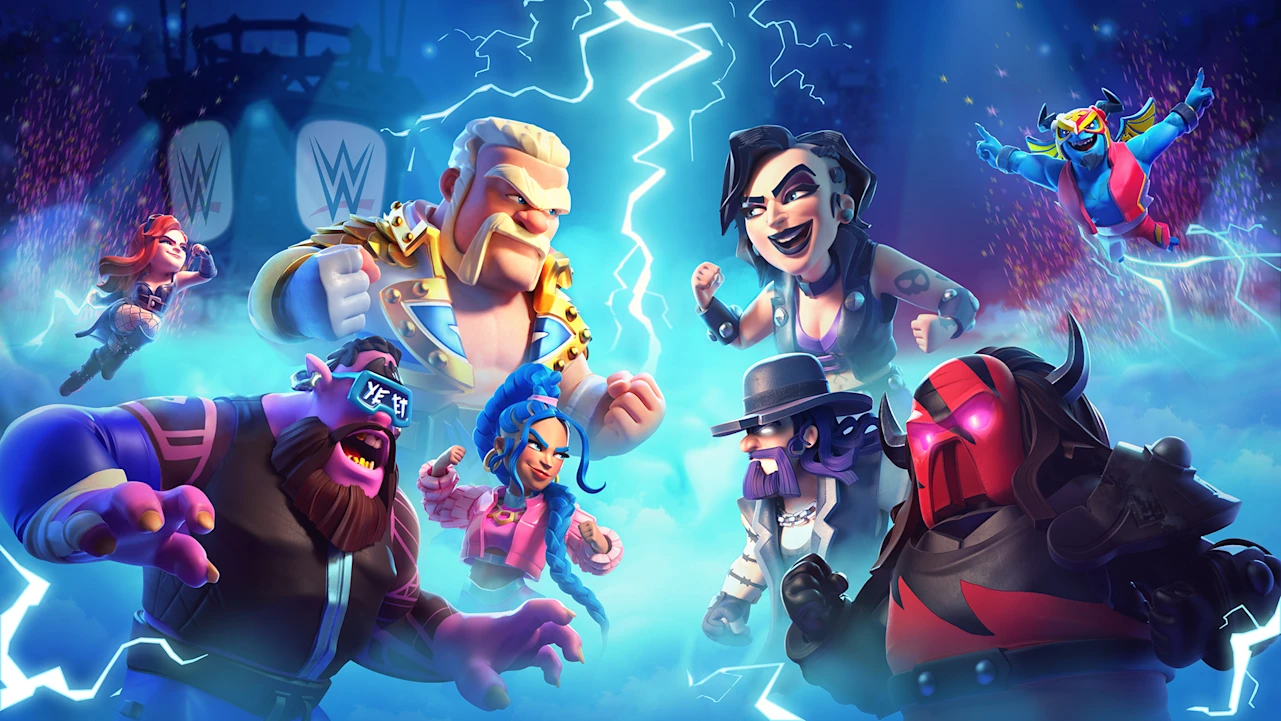

 Popular Games
Popular Games 














